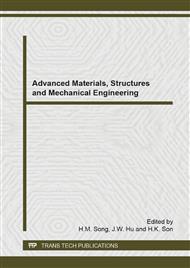p.317
p.325
p.330
p.336
p.345
p.349
p.355
p.361
p.366
Self-Tapping Screws without Pre-Drilling for Brazilian Reflorestation Species
Abstract:
Wood is a renewable source of structural material with high relative strength/weight, low energy production, which kidnaps and stores carbon in its production. The large use of wood is due to its special qualities as raw material for other products manufactured in residential construction or major works such as bridges, has been widely used in roofing for industrial and commercial buildings. Commercially there are limitations on the length of the wood, resulting from the extraction of tree trunks, thus requiring the adoption of binding elements is the use of self-tapping screws efforts required by side and which can be axial, shear, tensile or compression. Whereas in Brazil does not yet exist and the promising future of the product, this research aims to study the behavior of self-tapping screws together with Brazilian reforestation species of Pinus oocarpa and Lyptus (softwood and hardwood). Rothoblaas self-tapping screws had a good penetration in both woods without requiring pre-drilling, the species of Lyptus wood showed the highest values of strength and the inclination of the screws, at 45 degrees showed the best results on either species of wood.
Info:
Periodical:
Pages:
345-348
Citation:
Online since:
September 2014
Keywords:
Price:
Сopyright:
© 2014 Trans Tech Publications Ltd. All Rights Reserved
Share:
Citation:


